It's the last day of January, and there is over a foot of snow on the ground here in Michigan, but spring is almost here. I say this because we turned on the heat in our greenhouses today. We are waking up our plants, so we can start propagating.
Last year, I didn't post all that much, and I'm going to blame it on Covid. The pandemic had such a strong impact on the nursery business, and we've been incredibly busy trying to keep up with the demand for plants. My Delta account is full of cancelled tickets because I did not go to Italy, Germany, Korea, or the Netherlands as I had planned. On the positive side, I did spend more time in our trial garden, R&D greenhouse, and breeding fields evaluating plants. Today I want to share with you some of the plants that impressed me the most. Hopefully you'll see something you like, and the spring and summer photos will warm you up until spring arrives for real. Enjoy.
Let's Dance Sky View™ reblooming hydrangea
With each passing year, the genetics on our reblooming Hydrangea macrophylla keep getting better and better. Let's Dance Sky View hydrangea is one of the best yet. When we trial reblooming hydrangeas, we cut our plants back hard in that fall and once again in the spring. We do this to simulate untimely frosts. We also trial them for multiple years outdoors to make sure they'll bloom reliably in our harsh Michigan climate. If they bloom here, they should bloom anywhere. As you can see from the photographs below, Let's Dance Sky View excelled in both our trials, blooming nicely after being cut back as a container or having been frozen back in our field. When treated with aluminum sulfate or grown in acid garden soil, the flowers are an attractive sky blue color.
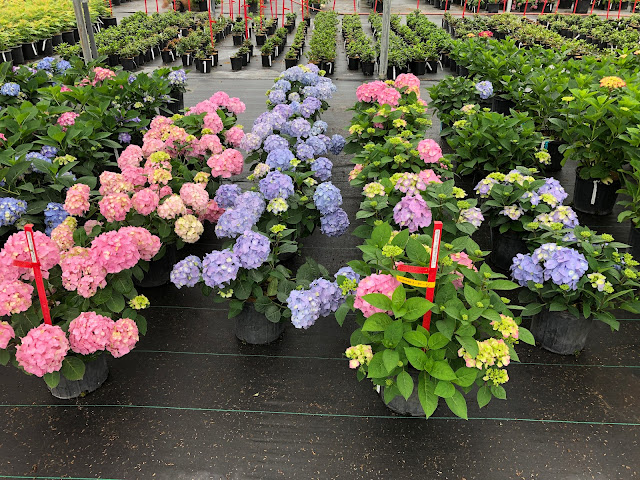 |
Plants on the left were cut in fall, and the plants on the right were cut back again in spring.
|
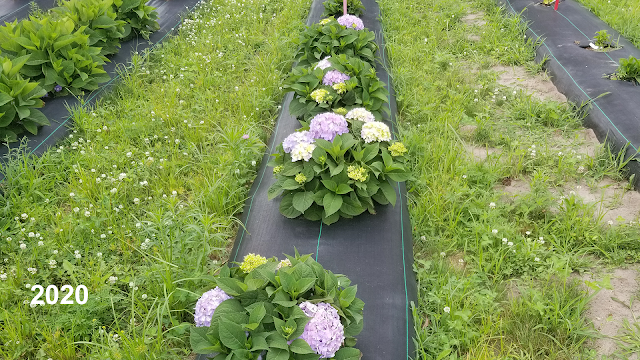 |
| Let's Dance Sky View hydrangeas flowered well after freezing back to the ground in 2020 and 2021. |
'Viva Polonia' and Happy Jack® Purple Clematis
So many consumers are disappointed by clematis, and it's not their fault. We set out to change that. You may not know it, but most clematis varieties on the market are selected for their flower size and how they perform for the grower, while we select ours based on garden performance. 'Viva Polonia' and Happy Jack Purple offer the very best in terms of garden performance. Here you can see how they looked in our trial garden last summer. Simply amazing!
 |
'Viva Polonia' clematis in our test garden
|
 |
Unique reddish-pink, star-like flowers on 'Viva Polonia' clematis
|
 |
Happy Jack Purple is always looking happy and healthy.
|
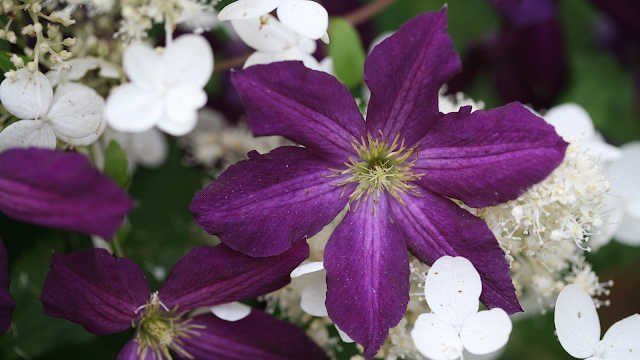 |
| Happy Jack Purple climbing on a Quick Fire hydrangea |
Puffer Fish™ Hydrangea paniculata
Puffer Fish™ hydrangea is a new selection developed at North Carolina State University that will be at retail in a year or so. Think of it as a super-sized Bobo hydrangea. Just like Bobo, it has full, lacy blooms from top to bottom, but the blooms are much bigger. The flowers open pure white and remain white until they transition in fall to a light green. It's also quite distinct in that new flowers continue to produce at the tip of the panicle, making it look as if the puffer fish flowers are spitting a bit of water. Puffer Fish has been a standout in all our trials.
 |
Puffer Fish hydrangea in our trail garden
|
 |
At full bloom, it's hard to see the foliage on Puffer Fish.
|
 |
| An easy-to-identify bloom, Puffer Fish blooms spit a bit of water. |
Wine & Spirits™ Weigela
We evaluate a lot of Weigela breeding each year, and one of the plants that shone was Wine & Spirits™ weigela, a new variety developed by Megan Mathey. What I love about this selection is its fresh greenish-white flowers. I've never seen this color before, and it just makes the flowers almost glow against the backdrop of their dark foliage. Growers and retailers will appreciate how well it looks in a container in the spring, and gardeners and landscapers will love how it looks in the landscape. Its unique flower color and overall flower power made it a standout in all of our trials.
 |
The greenish-white flowers of Wine & Spirits weigela appear to glow.
|
 |
A standout Weigela in our container trials
|
 |
| With lots of flower power, it lights up a garden even more than Wine & Roses. |
Mr. Mustard™ Sorbaria
When we trial a new variety, we compare it to similar plants on the market, and if it's not better, we pass on the plant. Mr. Mustard™ Sorbaria sorbifolia was clearly brighter and more compact than 'Sem' and the others. The plant is at its best in spring when it is flushing, showing off its feathered hues of red and yellow. While other selections burn or get ragged by mid-summer, Mr. Mustard Sorbaria passes inspection with its clean green foliage and cherry-red fruit. Be aware this species sends out runners in loamy soils and should only be planted in areas where it is contained. Plant in an isolated bed, or keep it contained by growing it in a decorative container. It's plenty hardy and will overwinter just fine. Its white, conical summer blooms look a bit like astilbe and are wonderful for attracting pollinators. This is a tough, hardy plant that performs wonderfully when in the right location.
 |
Mr. Mustard is a colorful container plant.
|
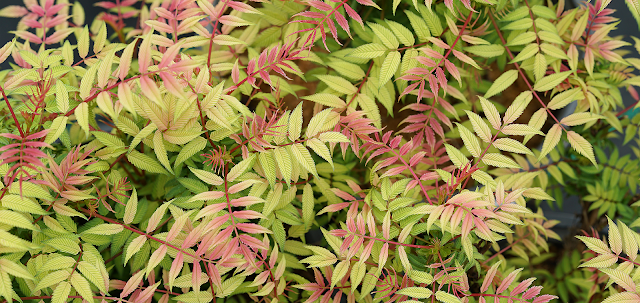 |
At its best in spring, Mr. Mustard is colorful and compact.
|
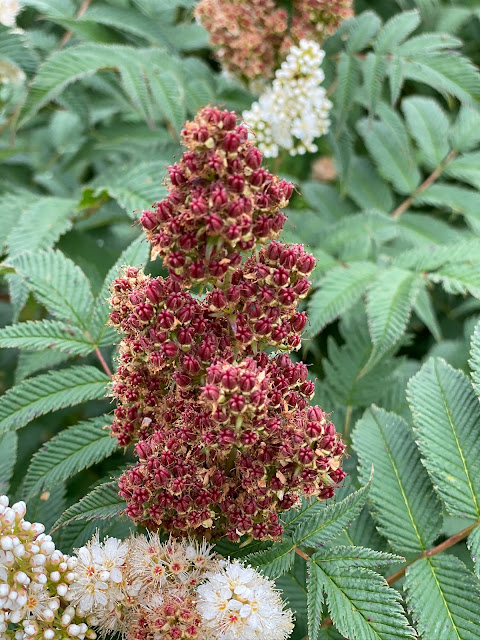 |
| In the summer the foliage turns to green, as opposed to brown like 'Sem.' |
Sting™ Thuja occidentalis
I am partial to columnar plants, so it is no wonder that Sting arborvitae captured my heart and imagination. This seedling selection of 'DeGroot Spire' that I sowed out some 15-18 years ago has remained exceedingly slim and attractive. Hardy and heat tolerant, use it as an exclamation point, or go all in and plant it in rows down each side of a road, like the Italians do with their narrow Mediterranean cypress, Cupressus sempervirens. Sting Thuja is a fun tree that is only limited by your imagination.
 |
Make a statement with Sting arborvitae, the super narrow Thuja occidentalis.
|
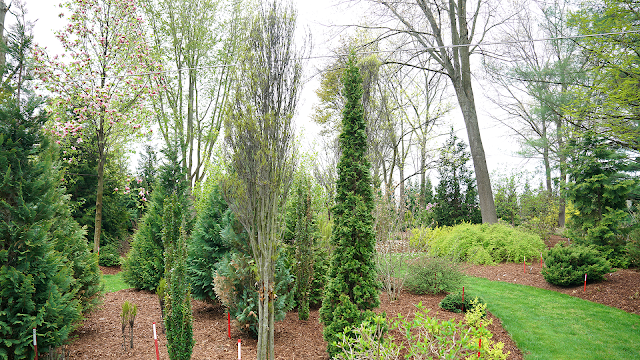 |
| Sting arborvitae in our test garden |
That's all for now. Join me soon when we'll take a look at some new and exciting plants specifically for the South. Until then, stay warm.






















































